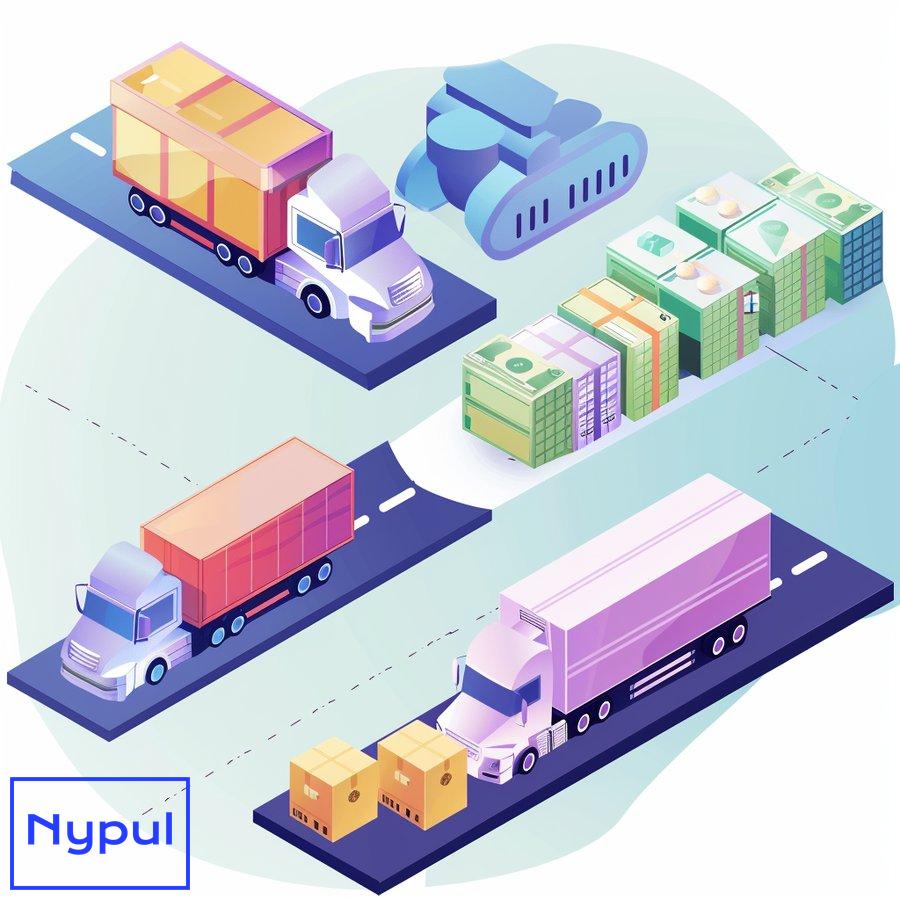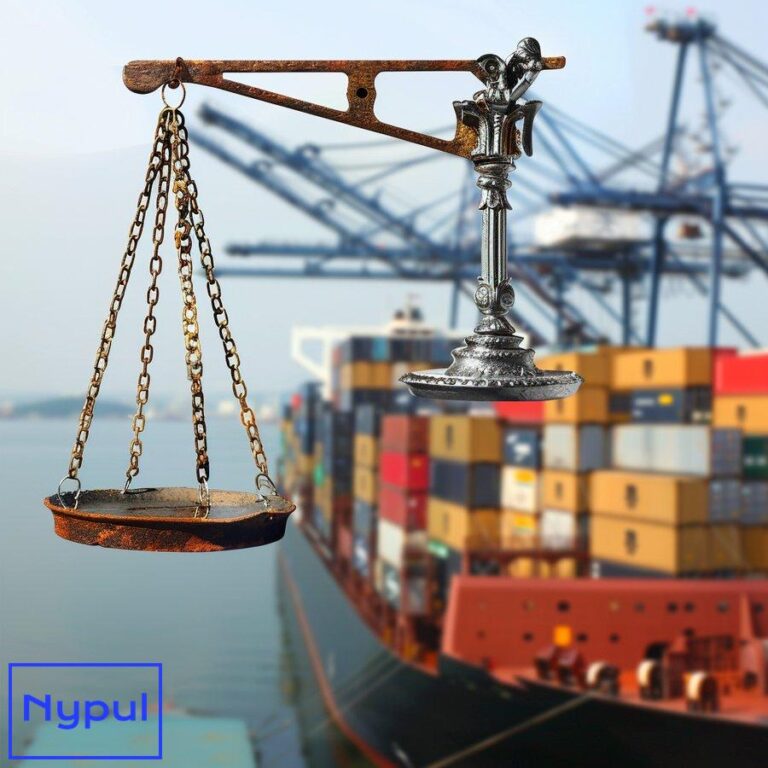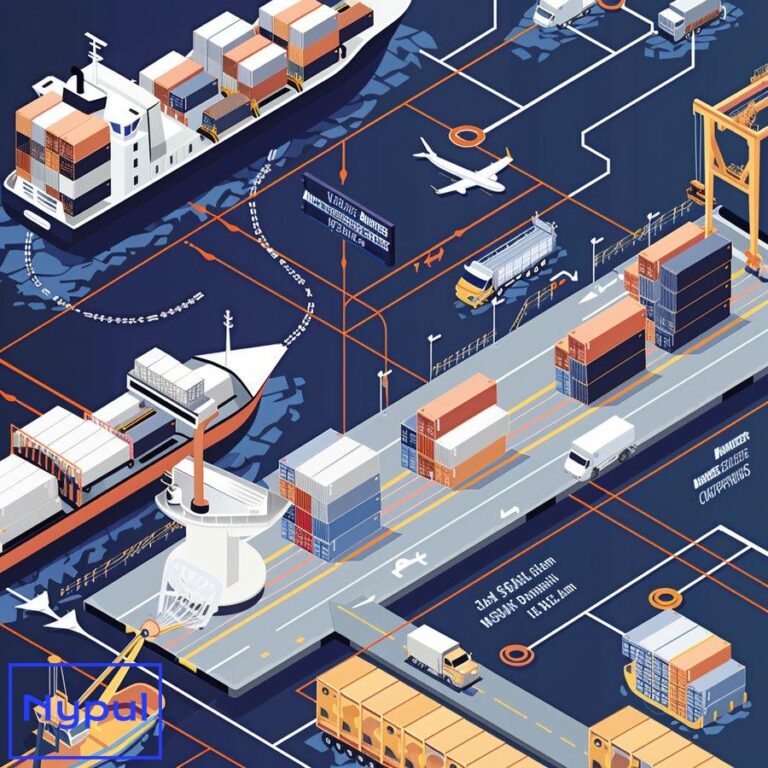What Is the Difference Between Bonded and Nonbonded Freight
The key distinction between bonded and nonbonded freight lies in their customs status and handling procedures. Bonded freight refers to imported goods that have not yet cleared customs or had duties and taxes paid. Nonbonded freight, on the other hand, has already gone through customs clearance and had all applicable fees remitted.
Bonded freight remains under customs control and supervision until it reaches its final destination or is exported. This allows the shipment to move within a country or be stored temporarily without immediate payment of duties and taxes. The carrier transporting bonded freight must be licensed and bonded with customs authorities.
Nonbonded freight has no such restrictions once it clears customs at the port of entry. It can move freely within the country and be stored or handled like any domestic cargo.
Some key differences include:
Customs Control
Bonded freight: Remains under customs supervision
Nonbonded freight: Released from customs control
Duty/Tax Payment
Bonded freight: Deferred until customs clearance
Nonbonded freight: Paid upon entry
Transportation
Bonded freight: Requires bonded carrier
Nonbonded freight: No special carrier requirements
Storage
Bonded freight: Must be in bonded warehouse
Nonbonded freight: Can be stored anywhere
Documentation
Bonded freight: Requires additional customs forms
Nonbonded freight: Standard shipping documents only
For importers and logistics providers, understanding these differences is crucial for compliance and cost management. Bonded freight offers more flexibility in terms of duty deferral and storage options, but comes with added regulatory requirements. Nonbonded freight is simpler to handle but requires immediate payment of all customs fees.
The choice between bonded and nonbonded freight depends on factors like the type of goods, intended use, storage needs, and cash flow considerations. For high-value goods or items that may be re-exported, bonded freight can provide significant advantages. For routine imports intended for immediate distribution, nonbonded freight is often the simpler option.
How does customs supervision affect bonded and nonbonded freight?
Customs supervision plays a pivotal role in distinguishing bonded from nonbonded freight, significantly impacting how each type of cargo is handled, stored, and transported.
Bonded Freight Supervision
Bonded freight remains under strict customs control from the moment it enters a country until it reaches its final destination or leaves the country. This supervision entails:
Continuous Monitoring: Customs authorities track bonded shipments throughout their journey within the country. This may involve electronic monitoring systems, physical seals, or regular reporting requirements.
Restricted Movement: Bonded freight can only be transported by authorized bonded carriers along approved routes. Any deviation requires customs approval.
Controlled Storage: When not in transit, bonded goods must be kept in customs-approved bonded warehouses or facilities.
Regular Audits: Customs may conduct periodic inspections of bonded facilities and review documentation to ensure compliance.
Clearance Requirements: Before bonded freight can be released into the domestic market, it must undergo formal customs clearance, including payment of duties and taxes.
The level of customs supervision for bonded freight can vary based on factors like the type of goods, their value, and the importer’s compliance history. High-risk or high-value shipments may face more stringent oversight.
Nonbonded Freight Supervision
Once nonbonded freight clears customs at the port of entry, it is largely free from ongoing customs supervision:
Initial Inspection: Nonbonded freight undergoes customs examination and clearance upon arrival. This may involve document review, physical inspection, or scanning.
Duty Payment: All applicable duties, taxes, and fees are paid before the goods are released.
Release from Control: After clearance, nonbonded freight is no longer under direct customs supervision. It can move freely within the country like domestic cargo.
Random Checks: While not under constant monitoring, nonbonded freight may still be subject to random customs checks or audits, especially if authorities suspect violations.
The table below summarizes key differences in customs supervision:
| Aspect | Bonded Freight | Nonbonded Freight |
|---|---|---|
| Duration of Supervision | Continuous until final clearance or export | Ends after initial clearance |
| Movement Restrictions | Limited to bonded carriers and routes | No restrictions after release |
| Storage Requirements | Must use bonded facilities | Can use any storage facility |
| Documentation | Ongoing reporting and record-keeping | Standard commercial documents suffice |
| Inspections | Regular and scheduled | Typically only at entry, may face random checks |
For importers and logistics providers, understanding these supervision differences is crucial for compliance and efficient operations. Bonded freight requires more rigorous tracking and reporting but offers flexibility in duty payment timing. Nonbonded freight involves less ongoing oversight but requires immediate payment of all fees upon entry.
The choice between bonded and nonbonded freight often depends on the nature of the goods, intended use, and the importer’s financial and operational considerations. High-value goods or those intended for re-export often benefit from bonded status, while routine imports for immediate distribution may find nonbonded freight more straightforward.
What are the key documentation requirements for each type of freight?
Documentation plays a crucial role in the movement of both bonded and nonbonded freight, with each type requiring specific paperwork to ensure compliance with customs regulations and facilitate smooth transportation. Understanding these requirements is essential for importers, exporters, and logistics providers to avoid delays and penalties.
Bonded Freight Documentation
Bonded freight requires more extensive documentation due to its special customs status:
Customs Bond: A financial guarantee filed with customs authorities, ensuring payment of duties and taxes if the goods are not properly exported or cleared.
In-Bond Application: Form submitted to initiate the bonded movement, typically CBP Form 7512 in the United States.
Transportation Entry and Manifest of Goods: Details the bonded movement from origin to destination.
Immediate Transportation (IT) Entry: For goods moving inland for customs clearance.
Transportation and Exportation (T&E) Entry: For goods transiting through the country for export.
Warehouse Entry: For goods destined for storage in a bonded warehouse.
Carrier Manifest: Lists all bonded shipments being transported.
Commercial Invoice: Describes the goods and their value.
Packing List: Itemizes the contents of each package.
Bill of Lading or Airway Bill: Contract of carriage between shipper and carrier.
Bonded Warehouse Documents: If applicable, including inventory records and withdrawal forms.
Nonbonded Freight Documentation
Nonbonded freight typically requires standard international shipping documents:
Commercial Invoice: Details the goods, their value, and the terms of sale.
Packing List: Provides a detailed inventory of the shipment contents.
Bill of Lading or Airway Bill: Serves as a receipt for the goods and contract of carriage.
Certificate of Origin: Confirms where the goods were manufactured or produced.
Customs Entry Form: Declares the goods for import, such as CBP Form 3461 in the U.S.
Import License: If required for specific types of goods.
Arrival Notice: Notifies the consignee of the shipment’s arrival.
Delivery Order: Authorizes the release of goods to the consignee.
The table below compares key documentation requirements:
| Document Type | Bonded Freight | Nonbonded Freight |
|---|---|---|
| Customs Bond | Required | Not required |
| In-Bond Application | Required | Not applicable |
| Transportation Entry | Required | Not applicable |
| Commercial Invoice | Required | Required |
| Packing List | Required | Required |
| Bill of Lading/Airway Bill | Required | Required |
| Certificate of Origin | May be required | Required |
| Customs Entry Form | Deferred until clearance | Required at entry |
| Warehouse Documents | If stored in bonded facility | Not applicable |
For both types of freight, additional documentation may be required depending on the nature of the goods, their origin, and the specific regulations of the importing country. For example, hazardous materials, food products, or pharmaceuticals often require special permits or certificates.
Accurate and complete documentation is critical for the smooth movement of both bonded and nonbonded freight. Errors or omissions can lead to delays, additional inspections, or even fines. Importers and exporters should work closely with their customs brokers and freight forwarders to ensure all required documents are properly prepared and submitted.
For bonded freight, maintaining detailed records of the bonded movement is crucial. This includes tracking the goods’ location, any transfers between bonded facilities, and eventual customs clearance or export. Many companies use specialized software to manage bonded inventory and generate required reports for customs authorities.
Nonbonded freight documentation, while generally simpler, still requires attention to detail. Ensuring that all documents accurately reflect the goods’ description, value, and origin is essential for smooth customs clearance and to avoid potential issues with valuation or classification.
How do storage and transportation restrictions differ for bonded and nonbonded freight?
Storage and transportation restrictions for bonded and nonbonded freight differ significantly due to their distinct customs statuses. These differences impact how goods can be moved, where they can be stored, and who can handle them. Understanding these restrictions is crucial for importers, logistics providers, and warehouse operators to ensure compliance and efficient operations.

Bonded Freight Restrictions
Bonded freight faces more stringent restrictions due to its uncleared customs status:
Transportation:
– Must be moved by authorized bonded carriers
– Limited to specific, pre-approved routes
– Requires customs seals or electronic tracking devices
– Time limits may apply for transit between bonded facilities
Storage:
– Must be kept in customs-approved bonded warehouses
– Segregation from non-bonded goods required
– Limited handling and manipulation allowed without customs approval
– Strict inventory control and reporting requirements
Handling:
– Only authorized personnel can access bonded goods
– Customs permission required for most operations beyond basic storage
– Repackaging, labeling, or assembly may be allowed under customs supervision
Time Limits:
– Maximum storage period in bonded facilities (often 5 years in the U.S.)
– Extensions may be possible with customs approval
Nonbonded Freight Restrictions
Nonbonded freight, having cleared customs, faces fewer restrictions:
Transportation:
– Can be moved by any licensed carrier
– No restrictions on routes or transit times
– No special customs seals or tracking required
Storage:
– Can be stored in any suitable warehouse or facility
– No segregation from domestic goods required
– No special customs reporting for inventory
Handling:
– No restrictions on who can access or handle the goods
– Free to repackage, label, or modify as needed
– Can be combined with or separated from other shipments freely
Time Limits:
– No customs-imposed limits on storage duration
– Subject only to commercial agreements and local regulations
The table below summarizes key differences in storage and transportation restrictions:
| Aspect | Bonded Freight | Nonbonded Freight |
|---|---|---|
| Carrier Requirements | Bonded carriers only | Any licensed carrier |
| Route Restrictions | Limited to approved routes | No restrictions |
| Storage Facilities | Customs-approved bonded warehouses | Any suitable facility |
| Inventory Control | Strict customs oversight | Standard commercial practices |
| Handling Limitations | Restricted without customs approval | No special restrictions |
| Time Limits | Often capped (e.g., 5 years in U.S.) | No customs-imposed limits |
These restrictions have significant implications for supply chain management and logistics planning:
Flexibility: Nonbonded freight offers greater flexibility in terms of storage locations, transportation options, and handling. This can be advantageous for just-in-time inventory systems or rapid distribution needs.
Cost Considerations: Bonded storage and transportation often come at a premium due to the additional security and compliance requirements. However, the ability to defer duty payments can offset these costs for some importers.
Compliance Burden: Managing bonded freight requires more rigorous processes and documentation to maintain customs compliance. This can increase administrative overhead and the risk of penalties for non-compliance.
Supply Chain Integration: The restrictions on bonded freight can complicate its integration into broader supply chain operations. Separating bonded and nonbonded inventory may require duplicate facilities or complex tracking systems.
Risk Management: The stricter controls on bonded freight can provide additional security against theft or loss, which may be beneficial for high-value goods.
For businesses dealing with both bonded and nonbonded freight, it’s often necessary to maintain separate storage areas and handling procedures. This can increase operational complexity but is essential for customs compliance.
Some companies choose to use Foreign Trade Zones (FTZs) or similar customs regimes to gain more flexibility in handling bonded goods. FTZs allow for a wider range of operations on bonded freight, including manufacturing and assembly, while still deferring duty payments.
The choice between bonded and nonbonded freight often depends on factors such as the nature of the goods, their intended use, the importer’s cash flow considerations, and the overall supply chain strategy. For high-value goods or those likely to be re-exported, the additional restrictions of bonded freight may be outweighed by the potential cost savings and flexibility in duty payments.
What are the cost implications of choosing bonded vs nonbonded freight?
The decision to use bonded or nonbonded freight can have significant financial implications for importers and logistics providers. Understanding these cost differences is crucial for making informed decisions that align with business objectives and cash flow management.
Bonded Freight Costs

Bonded freight often involves higher upfront costs but can offer long-term savings:
Bond Expenses:
– Cost of obtaining and maintaining a customs bond
– Annual bond premium (typically 0.5% of bond value, minimum $500)
– Collateral requirements for certain bond types
Specialized Transportation:
– Higher rates for bonded carriers
– Additional costs for customs seals or electronic tracking
Bonded Storage:
– Premium rates for bonded warehouse space
– Higher handling fees due to compliance requirements
Administrative Overhead:
– Costs for specialized software to manage bonded inventory
– Additional staff training for compliance procedures
– Expenses related to customs audits and inspections
Customs Broker Fees:
– Higher fees for managing bonded shipments and documentation
Potential Savings:
– Deferral of duty and tax payments
– Opportunity for duty drawback on re-exported goods
– Potential for reduced overall duty liability through strategic use of bonded facilities
Nonbonded Freight Costs
Nonbonded freight typically has lower upfront costs but requires immediate payment of duties and taxes:
Standard Transportation:
– Regular carrier rates without bonded premiums
– No additional costs for customs tracking or seals
Regular Storage:
– Standard warehouse rates
– No special handling fees for customs compliance
Administrative Costs:
– Lower overhead for inventory management
– Reduced compliance-related expenses
Customs Clearance:
– Standard broker fees for entry processing
– Immediate payment of all duties and taxes upon entry
Cash Flow Impact:
– Upfront payment of duties and taxes
– No opportunity for duty deferral or drawback
The table below compares typical cost factors:
| Cost Factor | Bonded Freight | Nonbonded Freight |
|---|---|---|
| Bond Expenses | $500+ annually | Not applicable |
| Transportation | 10-20% premium | Standard rates |
| Storage | 15-30% premium | Standard rates |
| Administrative | Higher | Lower |
| Duty Payment | Deferred | Immediate |
| Broker Fees | Higher | Standard |
Cost Analysis Considerations
When evaluating the cost implications of bonded vs nonbonded freight, importers should consider:
Cash Flow: Bonded freight allows for duty deferral, which can be significant for high-value shipments or large volumes. This can free up working capital for other business needs.
Volume and Frequency: For frequent importers or those dealing with large volumes, the fixed costs of bonded operations (like bond premiums) can be spread over more shipments, potentially making it more cost-effective.
Product Type: High-duty goods or those subject to quotas may benefit more from bonded status, especially if there’s a possibility of re-export.
Storage Duration: Long-term storage in bonded facilities can lead to significant savings on duty payments, but this must be weighed against higher storage costs.
Supply Chain Efficiency: While bonded freight may have higher direct costs, it can offer supply chain efficiencies that reduce overall logistics expenses.
Risk Management: The additional security and oversight of bonded freight can reduce the risk of loss or theft, potentially lowering insurance costs.
Example Cost Comparison
Consider an import shipment valued at $100,000 with a 5% duty rate:
Bonded Freight:
– Bond Premium: $500
– Transportation: $1,200 (20% premium)
– 30-day StorageExample Cost Comparison
Consider an import shipment valued at $100,000 with a 5% duty rate:
Bonded Freight:
– Bond Premium: $500
– Transportation: $1,200 (20% premium)
– 30-day Storage: $1,500 (bonded warehouse premium)
– Administrative Costs: $800 (customs compliance)
– Total Immediate Costs: $3,000 (excluding duties)
– Duty Payment Deferred: $5,000 (due upon clearance)
Nonbonded Freight:
– Transportation: $1,000 (standard rate)
– 30-day Storage: $1,000 (standard warehouse rate)
– Administrative Costs: $300 (customs clearance)
– Total Immediate Costs: $2,300 (including immediate duties of $5,000)
In this example, while bonded freight incurs higher immediate costs due to premiums and compliance fees, it allows for the deferral of the duty payment. This can be particularly beneficial for cash flow management. Nonbonded freight has lower upfront costs but requires immediate payment of duties, which can strain cash flow.
When should shippers opt for bonded freight over nonbonded freight?
Choosing between bonded and nonbonded freight depends on several factors related to the nature of the goods being shipped, the financial situation of the shipper, and logistical considerations. Understanding when to opt for bonded freight can help shippers maximize efficiency and minimize costs.
High-Value Goods
Shippers dealing with high-value items may benefit from bonded freight due to the ability to defer duty payments. This can be crucial for maintaining cash flow while waiting for the goods to be sold or distributed. Additionally, if there is a possibility of re-exporting these goods, bonded status allows for a duty drawback.
Goods Subject to High Duties
For products subject to high tariffs or duties, using bonded freight can reduce immediate financial burdens. By deferring duty payments until the goods are cleared through customs or sold domestically, shippers can better manage their cash flow and invest in other areas of their business.
Uncertain Market Demand
If market demand is uncertain or fluctuating, bonded freight provides flexibility. Shippers can store goods in a bonded warehouse without incurring immediate duty costs. This allows them to assess market conditions before deciding whether to sell domestically or export.
Re-export Opportunities
Goods that may be re-exported benefit significantly from bonded status. Shippers can avoid paying duties on items that are ultimately not sold in the domestic market. This is particularly advantageous for companies engaged in international trade who may need to move products across borders frequently.
Regulatory Compliance Needs
For shippers who require strict compliance with customs regulations due to the nature of their products—such as pharmaceuticals or hazardous materials—bonded freight offers a structured environment that ensures adherence to legal requirements throughout the shipping process.
Long-Term Storage Requirements
If long-term storage is necessary, especially for imported goods awaiting distribution or sale, bonded warehouses provide a viable solution. Shippers can store goods without incurring duty costs until they are ready for sale or distribution.
The table below summarizes scenarios where bonded freight is advantageous:
| Scenario | Reason |
|---|---|
| High-value goods | Defers duty payments |
| High duties | Reduces immediate financial burden |
| Uncertain demand | Flexibility in storage and sales decisions |
| Re-export opportunities | Avoids duty payments on unsold goods |
| Regulatory compliance | Ensures adherence to customs regulations |
| Long-term storage | Allows storage without incurring duties |
How do tracking and technology systems differ for bonded and nonbonded freight?
The tracking and technology systems used for managing bonded and nonbonded freight differ primarily due to the regulatory requirements associated with each type of cargo. Understanding these differences is essential for logistics providers and shippers looking to optimize their operations.
![]()
Bonded Freight Tracking Systems
Bonded freight requires more sophisticated tracking systems due to its customs-controlled status:
Real-Time Monitoring: Many logistics companies use advanced tracking technologies such as GPS and RFID tags to monitor the location and status of bonded shipments continuously. This ensures compliance with customs regulations regarding movement and storage.
Customs Reporting Systems: Specialized software solutions are often employed to generate required reports for customs authorities. These systems track key data points such as shipment status, inventory levels in bonded warehouses, and compliance with regulatory requirements.
Electronic Seals and Security Measures: To maintain security and prevent tampering during transit, electronic seals may be used on containers carrying bonded cargo. These seals provide alerts if tampering occurs and help ensure that shipments remain secure until they reach their final destination or are cleared through customs.
Integration with Customs Systems: Many logistics providers integrate their tracking systems with customs authorities’ databases. This allows for seamless information sharing regarding shipment status and compliance documentation.
Nonbonded Freight Tracking Systems
In contrast, nonbonded freight tracking systems tend to be simpler:
Standard Tracking Solutions: Nonbonded shipments typically utilize standard tracking technologies such as barcodes or basic GPS systems. While these solutions provide visibility into shipment status, they do not require the same level of detail as bonded freight tracking systems.
Less Regulatory Oversight: Since nonbonded freight is no longer under customs supervision after clearance, there is less need for specialized reporting systems or compliance checks related to customs regulations.
Flexibility in Technology Use: Shippers have more flexibility in choosing tracking solutions based on cost-effectiveness rather than regulatory requirements. Many companies use off-the-shelf software solutions that integrate easily with existing supply chain management systems.
The following table summarizes key differences in tracking systems:
| Aspect | Bonded Freight | Nonbonded Freight |
|---|---|---|
| Tracking Technology | Advanced (GPS/RFID) | Standard (barcodes/GPS) |
| Real-Time Monitoring | Required | Optional |
| Customs Reporting | Specialized software needed | Basic reporting sufficient |
| Security Measures | Electronic seals common | Standard security practices |
| Integration Needs | Must integrate with customs systems | Less integration required |
For logistics providers managing both types of freight, understanding these differences is crucial for ensuring compliance while optimizing operational efficiency. Companies that handle significant volumes of bonded freight may invest in specialized technology solutions tailored to meet regulatory requirements.
Conversely, those focusing primarily on nonbonded shipments may prioritize cost-effective tracking solutions that enhance visibility without the complexities associated with customs compliance.
What are the compliance considerations for bonded freight handling?
Handling bonded freight involves several critical compliance considerations that shippers must address to avoid penalties and ensure smooth operations. Understanding these requirements is essential for anyone involved in logistics management or international trade.
Customs Regulations
Bonded freight must comply with specific customs regulations throughout its lifecycle:
Customs Bonds Requirement: A valid customs bond must be maintained for all shipments classified as bonded. This bond serves as a guarantee that duties will be paid if the goods are not properly exported or cleared through customs.
In-Bond Application Process: Shippers must submit an In-Bond application detailing the specifics of the shipment before moving it inland or storing it in a bonded facility. This includes information about the type of goods, their value, and intended use.
Documentation Accuracy: All documentation related to bonded shipments must be accurate and complete. Errors in documentation can lead to delays in clearance or even fines from customs authorities.
Inventory Management Compliance
Maintaining accurate inventory records is crucial when handling bonded freight:
Tracking Requirements: Companies must implement robust inventory management systems that track all movements of bonded goods within warehouses or during transit. This includes documenting any changes in status or location.
Regular Audits and Inspections: Customs authorities may conduct audits of bonded facilities to ensure compliance with regulations. Companies should prepare for these inspections by maintaining organized records and ensuring all procedures are followed correctly.
Conclusion
Understanding the differences between bonded and nonbonded freight is essential for importers and logistics providers navigating international trade regulations. Each type has its advantages and disadvantages based on factors like cost implications, storage restrictions, documentation requirements, and compliance considerations.

By carefully assessing their unique needs—such as cash flow management, product type, market demand uncertainty, regulatory requirements, and logistical capabilities—shippers can make informed decisions about whether to opt for bonded or nonbonded freight solutions that align with their business strategies.
Investing in technology solutions tailored for each type of cargo can further enhance operational efficiency while ensuring adherence to necessary compliance measures.





